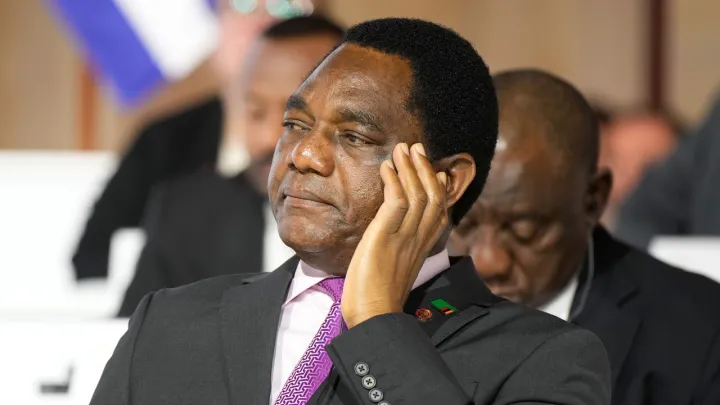Kenya’s interior ministry has said that more than 300 people have been arrested over anti-government protests that left nine dead as the opposition announced fresh demonstrations next week.
There were violent clashes and looting on Wednesday in parts of the East African nation as protesters took to the streets over tax hikes and economic pressures in defiance of a government ban.
Police have been accused of a heavy-handed response and criticised for using tear gas against civilians, including at a school, causing dozens of children to be hospitalised.
Opposition leader Raila Odinga's Azimio alliance said it would stage its next demonstration on Wednesday, vowing to keep up the street action until cost of living pressures come down.
"Our protests will resume on Wednesday, July 19, 2023," Azimio said, hours after the interior ministry announced a raft of arrests linked to the demonstrations.
"Acts of lawlessness... can neither be accepted nor tolerated", Interior Minister Kithure Kindiki said.
Destruction, cost of living ‘unrelated’
"There is no relationship between lowering the cost of living and destruction of critical infrastructure built using public funds. That is hooliganism, lawlessness, and a recipe for anarchy," he said.
"Security officers are directed to enforce the law firmly and decisively and deal with all criminals, including economic saboteurs, looters, and vandals, who are destroying private property."
He said 312 people "who directly or indirectly planned, orchestrated, or financed" the protests had been arrested and would be charged, including a member of parliament who was later released.
"The search for more culprits is on," he added.
The unrest has claimed nine lives, according to the Kenya National Commission on Human Rights (KNCHR), an independent watchdog created by parliament, which said the figures were shared by the police.
On Thursday, the rights body called for an investigation into reports of looting, vandalism and incidents of police brutality, warning the country was “teetering on the brink of anarchy.”
"It is essential for leaders across the political spectrum to prioritise the interests of the nation and its citizens over partisan interests," it said, urging the two sides to find a solution.
Deaths in different parts of Kenya
Police said one man died in clashes between rival groups in Sondu on the border of Kericho and Kisumu, the latter an Odinga stronghold.
Six people lost their lives when police opened fire on demonstrators in the towns of Mlolongo and Kitengela on Nairobi's outskirts, and in Emali along the highway to Mombasa.
Two others were killed in Migori and Busia in western Kenya, KNCHR said.
In Nairobi's Kangemi slum, dozens of children were hospitalised, some unconscious, after teargas was fired near their classrooms.
The National Gender and Equality Commission, a state authority, strongly condemned the incident.
"School children... who should be shielded from such chaos, were tragically caught in the crossfire," it said, deploring the vandalism and rights abuses linked to the protests.
Odinga initiated a string of anti-government rallies this year after losing to William Ruto in presidential elections last August – a vote he claims was “stolen.”
Last week, protests in several cities also saw six people killed.
High inflation
Already hit by soaring inflation, many Kenyans say the country can ill afford the disruption caused by the demonstrations.
Each day of protest costs the economy an average of three billion shillings ($21.8 million), according to an estimate by the Kenya Private Sector Alliance.
Last month, Ruto signed a new finance law aimed at generating more than $2.1 billion for the government's depleted coffers.
The Finance Act provides for new taxes or increases on basic goods such as fuel and food and mobile money transfers, as well as a levy on all taxpayers to fund a housing scheme.
























